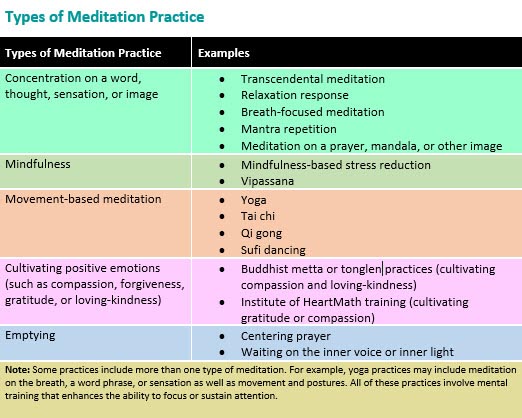Just Breathe: The Importance of Meditation Breaks for Kids
Our kids’ brains are tired, and children of all ages really need opportunities where they can take time out each day “unplugged” to relax and focus. Meditation offers this break and helps kids function more effectively and clearly.
Children today also have reportedly high stress levels. To help them take a break, the American Academy of Pediatrics (AAP) encourages parents to share meditation with their children—and teachers to incorporate mindfulness training into their lesson plans.
The simple act of teaching children how to stop, focus, and just breathe could be one of the greatest gifts you give them.
Meditation Options for Children
Meditative practices have been used since ancient times to improve health and well-being. But, just as an athlete may do different exercises, people who practice meditation often use different types.
The most common types of meditation practice are concentration, mindfulness, movement based, cultivating positive emotions, and emptying. There are specific examples and ways to practice each type. See table.

Many meditation practices use breathing techniques to promote a state of calm. Mindfulness meditation on breath, perhaps the most well-known type, involves sitting quietly, resting or closing your eyes and bringing your attention to your breath. When your attention drifts away, which it is likely to do, simply usher your attention back to your breath without judgment. You don’t need years of meditative practice to benefit from this technique, nor do your children.
There’s no doubt, however, that sitting still for any length of time can be difficult for some kids. For this reason, a movement-based meditation, such as yoga, may serve as a good introduction.
Research on the Benefits of Meditation in Children
Meditation is used to rest the mind, body and spirit. This, in turn, has many mental, physical, and spiritual benefits. Mindfulness meditation, specifically, is gaining a foothold in disease prevention and treatment.
A number of studies in school settings also show improved attention and behavior. Some research has shown benefits for attention deficit hyperactivity disorder (ADHD), anxiety, depression, school performance, sleep, behavior problems, and eating disorders. For example, a trial of 300 low-income, minority urban middle-schoolers using school-based mindfulness instruction led to improved psychological functioning and lower levels of posttraumatic stress disorder (PTSD) symptoms.
There are also physical benefits as it calms the nervous system and decreases stress hormones. Studies have shown benefits for gastrointestinal symptoms, obesity, headaches, high blood pressure, pain sensitivity, and immune function. For example, a trial looking at the effect of mindful breathing meditation at a summer camp of 166 teens at risk for cardiovascular disease found that breathing awareness produced a reduction in blood pressure and heart rate.
Meditation Tips
Meditation does not have a set of rules, but there are some tips that can help.
- The length of time and frequency of meditating can vary for different people and different practices. But, pediatricians typically recommend the following time frames:
- Preschool children: A few minutes per day.
- Grade school children: 3-10 minutes twice a day.
- Teens and adults: 5-45 minutes per day or more based on preference.
- Try incorporating deep breathing into your children’s daily bedtime routine—it can help them wind down for the night and make meditation easier to do when other situations arise.
- Remind grade-schoolers and teens to take a few deep breaths before answering a difficult question at school, taking a test, or before an athletic performance.
- As young children learn to manage strong emotions, deep breathing can be part of the process—especially before and after time outs.
- While meditation can be done on your own, it can also be done with the help of a trained professional. Some counselors and individuals with training in meditation can help others learn and practice meditation.
- Meditation is not currently covered by most insurance plans unless given by a licensed counselor. It is always best to check with your individual plan. Flexible medical spending programs may count meditation training as a medical expense.
- There are multiple ways to learn different practices of meditation. There are books, audio recordings, videos, online training, websites, and even smartphone apps to help children meditate. Choose and practice the one that works the best for you and your child, and enjoy a calmer body, mind and spirit.
SHIJINA RIJESH
